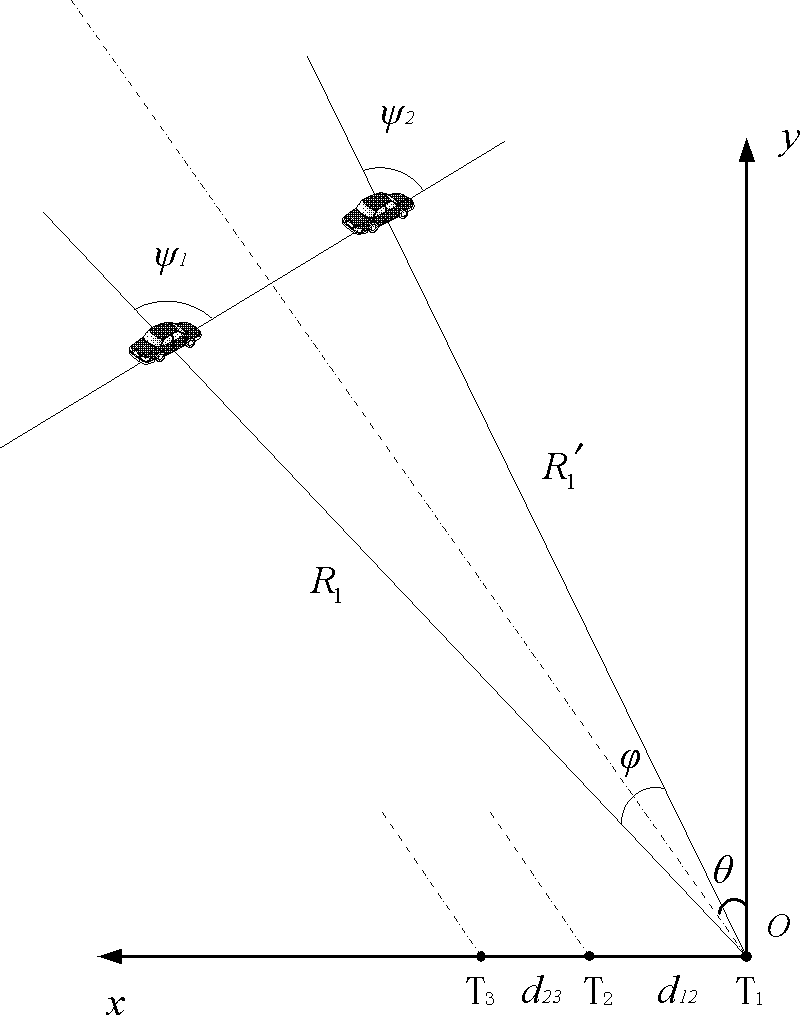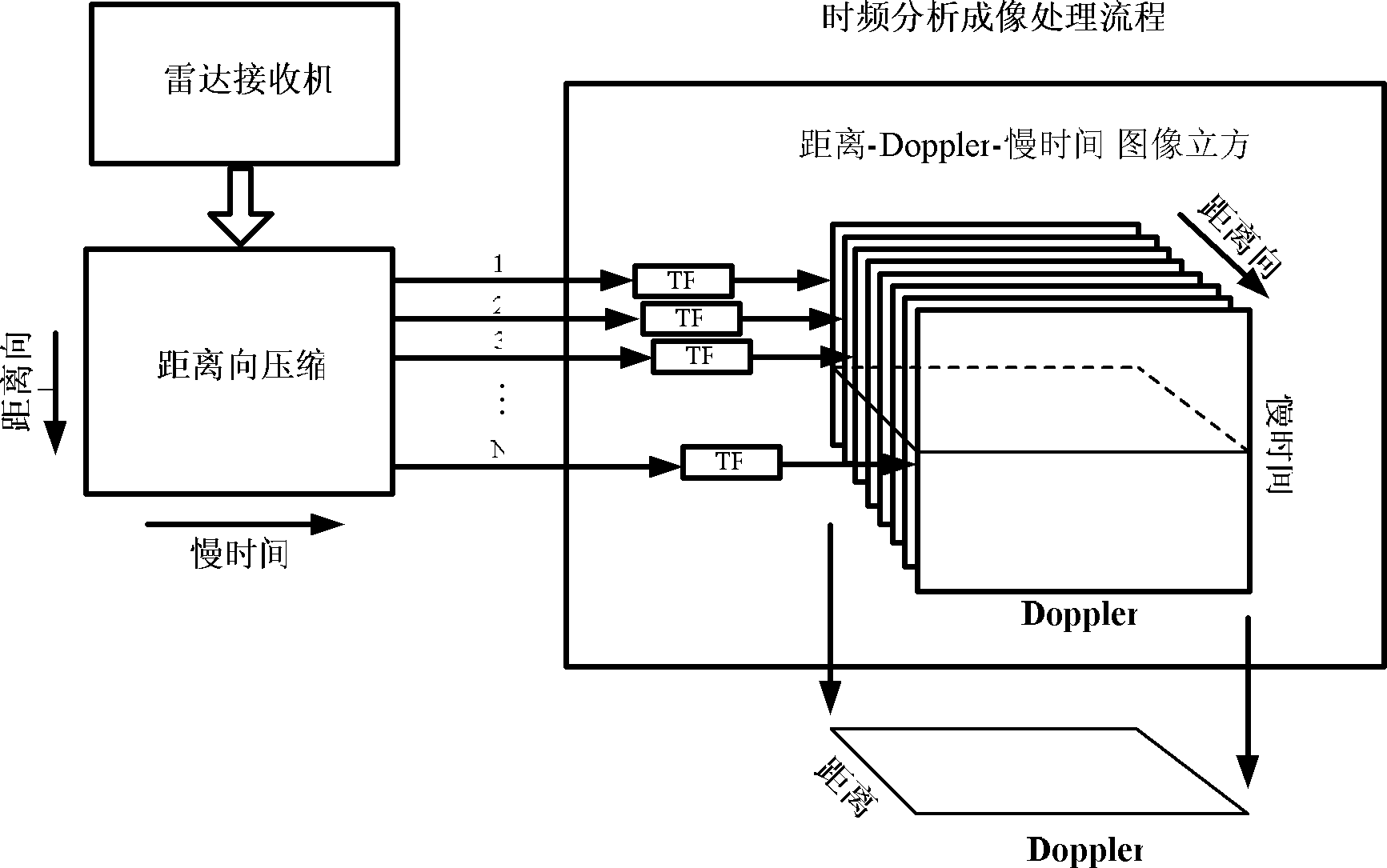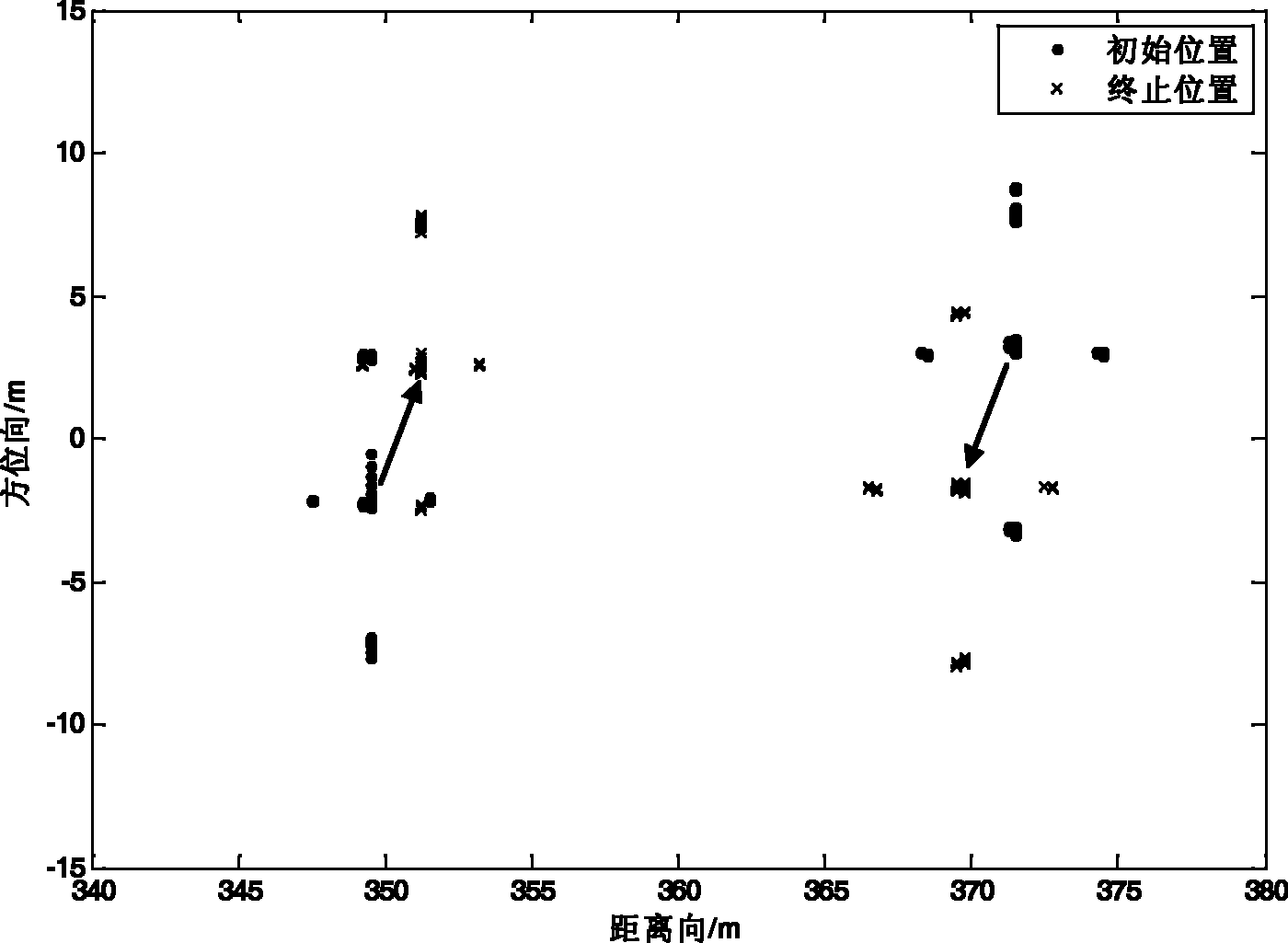Interferometric inverse synthetic aperture radar (InISAR) hyperactivity target-oriented imaging and motion trail reconstruction method based on time frequency analysis
A technology of time-frequency analysis and motion trajectory, which is applied in the fields of radar imaging and signal processing, and can solve the problem of not being able to give information about the azimuth position of the target.
- Summary
- Abstract
- Description
- Claims
- Application Information
AI Technical Summary
Problems solved by technology
Method used
Image
Examples
Embodiment Construction
[0064] The geometry of the system is as figure 1 As shown, the system adopts the mode of one transmission and three receptions, and the antenna T 1 Reflected chirp signal, antenna T 1 , T 2 and T 3 Receive target echo at the same time. During the imaging time, the target to the antenna T 1 distance from R 1 change to R 1 '. Three channels are recorded into three signals, and they are processed according to the following steps.
[0065] Step S1: Eliminate the clutter interference of the stationary target and obtain the signal t m Indicates the azimuth slow time;
[0066] Step S2: On the signal obtained in step S1 Do time-frequency analysis along different range gates to obtain signals
[0067] Step S3: Repeat steps S1 and S2 for the signals of the other two channels, and the three channels obtain signals respectively and
[0068] Step S4: registration interference: for a slow time t m,j (j∈1, 2, 3, ..., q, q represents the number of pulses), obtained from ...
PUM
 Login to View More
Login to View More Abstract
Description
Claims
Application Information
 Login to View More
Login to View More - R&D
- Intellectual Property
- Life Sciences
- Materials
- Tech Scout
- Unparalleled Data Quality
- Higher Quality Content
- 60% Fewer Hallucinations
Browse by: Latest US Patents, China's latest patents, Technical Efficacy Thesaurus, Application Domain, Technology Topic, Popular Technical Reports.
© 2025 PatSnap. All rights reserved.Legal|Privacy policy|Modern Slavery Act Transparency Statement|Sitemap|About US| Contact US: help@patsnap.com



